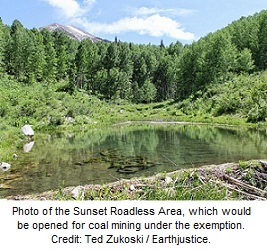by Romany Webb and Justin Gundlach
There has been much talk in recent weeks about pricing carbon to reduce greenhouse gas emissions. Earlier this month, a group of former Republican cabinet members proposed adoption of a nationwide carbon price, starting at $40 per ton. That seems unlikely, however. Even the proposal’s main architect, former Secretary of State James Baker, acknowledged that he faces an “uphill slog” in convincing the federal government to act. In the absence of federal action, many states are stepping in. Here in New York, for example, we already have three forms of more or less direct carbon pricing. The most direct of these is imposed on certain fossil fuel power plants by requiring them to purchase carbon dioxide emissions allowances as part of the Regional Greenhouse Gas Initiative. The others, established through New York’s Clean Energy Standard, compensate renewable generators and nuclear plants for their low-carbon attributes.
Prompted in part by these policies, New York’s electric transmission grid operator (the “New York Independent System Operator” or “NYISO”) recently commenced a review to assess possible means of incorporating the cost of carbon emissions into wholesale electricity market prices. To inform that review, the Sabin Center is today publishing a white paper, exploring two approaches to carbon pricing. Under the first, NYISO would adopt a carbon price of its own initiative, with a view to improving the operation of wholesale electricity markets. The second would involve adoption of a carbon price designed to reflect and harmonize state level policies.
These two approaches are not mutually exclusive and are, in many ways, similar. Under both approaches, NYISO would set a dollar value for each ton of carbon dioxide emitted during electricity generation (the “carbon price”), which would then be used to calculate a carbon fee for each generator, reflecting its emissions profile. This fee would be added to the prices generators bid into the wholesale electricity market and those adjusted prices used by NYISO to determine the dispatch order. The result would likely be a reordering of dispatch, with high-emitting generators dispatched (and paid) less frequently, and cleaner alternatives more frequently.
Despite these similarities, the legal justifications for the two approaches are somewhat different. To justify the first—and more contentious—approach, it would be necessary to show that carbon pricing improves the functioning of wholesale electricity markets, for example by enhancing competition and ensuring proper price formation. The Federal Energy Regulatory Commission (“FERC”) is responsible for overseeing wholesale markets to ensure they result in reliable supplies of electricity at just and reasonable rates. FERC has long taken the view that, to achieve this goal, markets must be competitive. The current failure to price carbon undermines the competitiveness of markets and, more specifically, the participation of low-carbon generators in those markets. Adopting a carbon price would level the playing field for all market participants and thereby enhance market competition. It would also ensure that market rates reflect the full cost carbon dioxide emissions and associated climate change, something which is vital to provide correct incentives for investment in new facilities.
Our second proposed approach to carbon pricing is less contentious and would be justified by pointing to state-level public policy. Numerous policies aimed at decarbonizing the electricity sector have recently been adopted in New York and more are expected in the future. A carbon pricing scheme that rationalizes existing policies and anticipates future changes would ensure that wholesale markets operate efficiently and send accurate signals to market participants and investors. Such a scheme would also be consistent with FERC’s goals for improved transmission planning, in part by encouraging greater attention to non-transmission alternatives.
This second approach would fit comfortably within the boundaries of FERC’s authority to strike a balance between respecting state-level policy and ensuring the smooth operation of wholesale markets. The first approach is more ambitious and would push the boundaries of past market regulation, though in ways that are consistent with both the law and FERC practice. In light of the urgent need to reduce carbon dioxide emissions, perhaps a little ambition is exactly what’s needed.
Romany Webb is a Research Scholar at Columbia Law School, Adjunct Associate Professor of Climate at Columbia Climate School, and Deputy Director of the Sabin Center for Climate Change Law.





